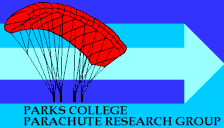Courtesy of Parks College of St. Louis University. These tests were conducted
by Parks College in conjunction with Paranetics, Inc. They were funded
through the New Wold Vista (NWV) Precision Aerial Delivery Program by
the Air Force Office of Scientific Research (AFOSR).
This page displays six pictures of the actual cross parachute
wind tunnel test at the Parks College Wind Tunnel Center. Comparisons of
actual and simulated geometries
as well as of
average drag results
are also available.
This first picture is simply a view of the Parks Wind Tunnel setup.
More information on the dimensions of the wind tunnel and of the cross
parachute model is
available.
|
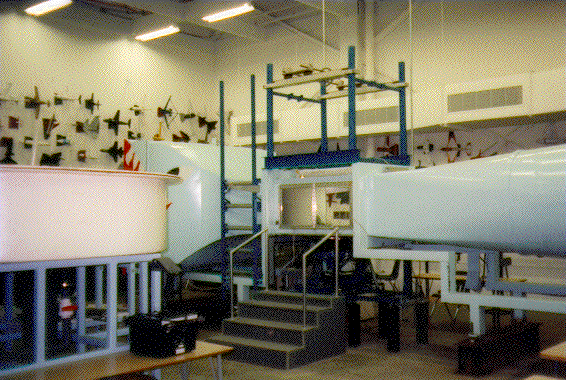 |
Next we have a fairly good view of the final geometry of the cross
parachute as given by the wind tunnel test. Also see a
comparison
of the actual and simulated geometries.
|
 |
Shown at right is a view of a reefed cross parachute; the base of the
chute is tied to force it to be much narrower than normal, as can be seen
by comparing this picture to the previous one.
|
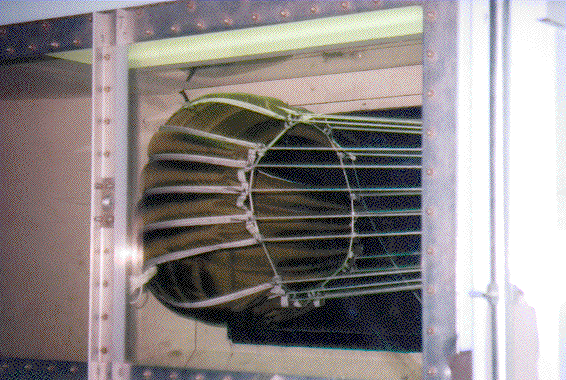 |
Here, an apex line has been attached to the middle of the cross parachute,
and is being pulled to force a different geometry. Among other things, the
stability of the new geometry was tested.
|
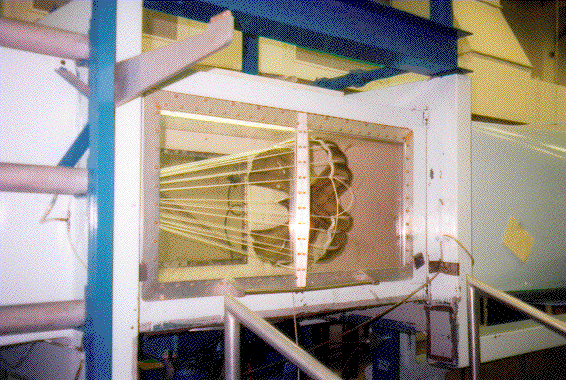 |
The reefed cross parachute at right has also been forced to take a different
geometry, using an apex line as in the previous picture.
|
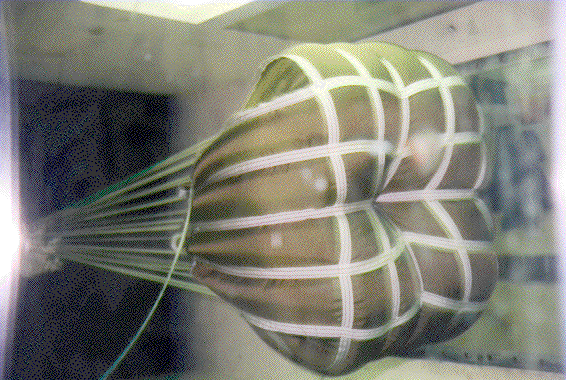 |
Finally, the cross parachute here has had its skirt folded (the sides
of the cross parachute are half as long as before.)
|
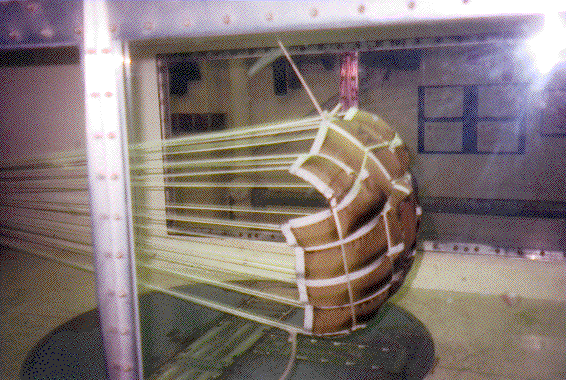 |
For more information, consult the
